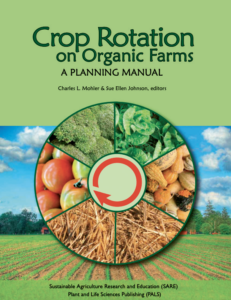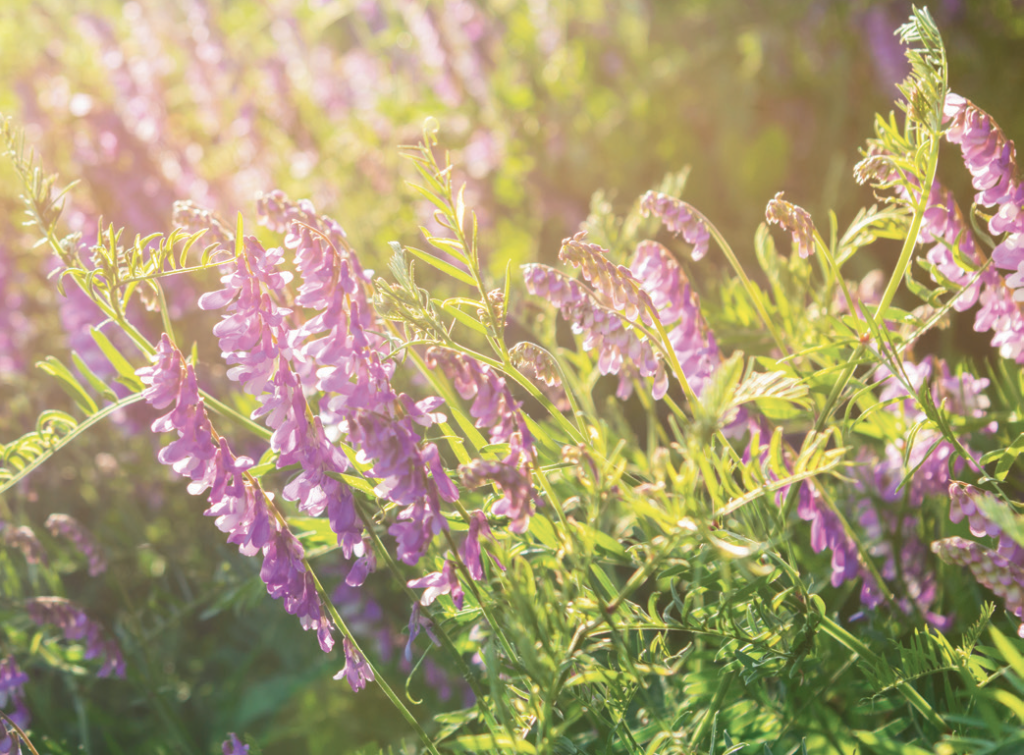
Dec 3, 2020
The best-laid crop rotation plans oft go awry. Here’s how to circle back when they do
Crop rotations quickly become complicated – that’s what Charles Mohler found when he and Sue Ellen Johnson wrote the book on that difficult subject.
Although professional growers understand the dynamics of soil health and rotate from one crop to another so that the soils remain strong, pathogen-free and healthy, written resources on the subject are somewhat difficult to find.
Grower expertise
“Crop Rotation on Organic Farms,” published in 2009, is broken into several sections, but is largely based on interviews with Northeast growers about the practices they used.
 A team of researchers working with a USDA grant for sustainable agriculture in the early 2000s first studied 11 Northeastern farms in great detail over two years. Mohler, a plant biologist at Cornell University, said he realized that more information was needed on crop rotations.
A team of researchers working with a USDA grant for sustainable agriculture in the early 2000s first studied 11 Northeastern farms in great detail over two years. Mohler, a plant biologist at Cornell University, said he realized that more information was needed on crop rotations.
“A big problem organic crop growers have is planning crop rotations. Because of the diversity of crops grown on an organic farm it just becomes a very messy, complicated problem,” he said. “You’ve got all these different crops at different acreages … and also just the number of crops involved and the fact that they’re going in at various times, and some of them getting planted multiple times over the course of the season and so forth.”
Mohler said he and Johnson used DACUM, or Develop A Curriculum, a systematic process for “coaxing information” out of workers about a particular job, using a workshop setting.
“We thought that that might be a way of getting information about how growers actually do crop rotation. We had all these contacts in the organic farm organizations (who) were part of the project, and so we had them nominate farmers who had a reputation for the expertise in crop rotation,” Mohler said. “So that’s where we started. And then you see the problem is that it’s not something that has been effectively studied experimentally; you can’t just go to the scientific literature and find out much about crop rotation. The experiments that have been done are mostly things like a corn-soybean rotation versus continuous corn, for example.”
Ad Hoc sequencing
What Mohler and his colleagues found from the growers was that almost no fixed crop rotations survive unforeseeable fluctuations in weather, disease and prices.
“Unless the farm is growing very few crops, you can’t have a fixed crop rotation, because something always interferes with your forward planning,” he said. “You may plan … but, you know, the weather intervenes. You can’t get the crop in the ground in a timely fashion, so then you have to think, ‘Well, we have the field, it’s a good field, might as well grow something on it.’ So you grow something else. Or you’re planning on growing X but then it turns out you get this market opportunity, and, ‘Wow, I could sell a lot of Y if I grew it this year!’ and so then you jump on it and grow Y.
“Well, then your rotation is all derailed. And so, one thing that came out of (our study) was that the forward planning horizon is usually just a year.”
Mohler said most organic growers do have a plan for the next year – they need to know next year’s cash crop to plan their cover crop for the winter.
“You don’t want to plant hairy vetch, for example, in the fall on a field, if you’re going to plow it up early to plant, you know, early lettuce, because hairy vetch won’t have grown much and it won’t have produced much nitrogen – it’s kind of wasting the seed,” he said.

A ‘bigger framework’
But what he also found interesting was that although some of the growers’ crop rotations seemed ad-hoc, they kept their options open by growing “within a bigger framework,” taking a few acres out of cash crop production some years.
“Usually the larger framework involves taking the fields out of whatever your big money maker is, maybe it’ll be a year just in cover crops,” Mohler said. “As one grower told me, he said, it’s a whole lot easier to grow six acres of vegetables on 12 acres of land than it is to grow six acres of vegetables on six acres of land. The same principle applies to 600 acres of vegetables on 1,200 acres of land.”
Mohler admits, though, that the “bigger framework” strategy isn’t for landlocked growers or those whose farmland is simply so valuable they can’t grow anything besides cash crops.
“In the Northeast, and to a large degree in the Southeast… a lot of the vegetable farms are growing some vegetables – they’re not to a large scale,” he said. “You know, six, 20 acres or something. But they have a lot more land that’s not in vegetables. And the reason is, they’re not scaled up to manage that large of a vegetable area. But that allows them the possibility of these kinds of rotations where you have part of the land in cover crops or a sod crop.
“Now, you get out to the Willamette Valley, Oregon, where I grew up, or Central Valley, California, and the land is so valuable that you can’t afford to do that, or at least most growers can’t.” One California grower he talked to rotates with rice, just because most weeds can’t tolerate being in a flooded field.
Rotation for weeding
Mohler’s more recent work has focused on multi-year strategies for getting rid of weeds, and he has co-authored another book on that topic, “Manage weeds on your farm: An ecological approach,” which is currently in press with Sustainable Agriculture Research and Education (SARE).
Rotating between crops that are planted in the spring, with crops that are planted in the fall, can change the “competitive stress” on the weed community.
“Of course, the same practice also changes the times that you’re tilling the soil.
“If you have a weed that goes to seed late in the season, and you plant a fall crop, your tillage is going to kill that plant before it goes to seed,” Mohler said.
“If you change the length of the growing season of your crop, you can change the weeds,” he said. For example, a long season weed like lambsquarters or common ragweed will not have time to mature in a short season crop like lettuce or spinach. Then fewer weed seeds will be in the soil next time you plant a long season crop.
Cleaner soil
One of the benefits of using a “bigger framework” for crop rotation is the ability to space plantings that may attract the same pathogens – for instance, potatoes and tomatoes, which are both members of the nightshade family, he said. Another example is clubroot – a potential problem on almost all brassica crops.
“If you have brassicas in the field too frequently, you can end up with a clubroot problem, and once you’ve got it, it’s really hard to get rid of it,” Mohler said. “You have to basically not grow any brassica in that field for, I think, like seven years.”
And avoiding pathogens is one of the greater reasons for practicing crop rotation in general. Growing the same crop year after year builds a cottage industry of the pests and diseases they are susceptible to. Mohler remembers a grower who was overconfident in his ability to grow snap beans “two years out of three” until he ran into a disastrous issue with white mold.
Such diseases are “not a problem until they’re a problem, and then once they’re a problem you really got a problem,” he said. “They don’t show up right away. It’s not the new grower who just started the farm two years ago that runs into these disease problems with the crop rotation, it’s the experienced growers who have figured out that they can make a lot of money growing a particular crop that they have a really good market for. Then they grow a lot of it, and then they get a disease problem.”
Cleaner ground is even more of a priority for organic growers, Mohler said.
“You can’t just go spraying,” he said. “And with the soilborne issues, what are you going to do? It’s in the soil.”






